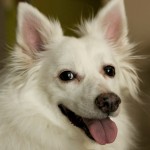
People say all the time “My Dog is Dominant!” But what do they mean by dominant dog? Lets get a definition first. Dominant = Having power or influence over others. (Oxford Dictionary). This is more of an idea than an action though.
Can ideas be measured? Ideas don’t have anything empirical that can readily to measured. Counting how many times something has power or influence over another is hopeless without first understanding what power or influence might mean. The parts of power and influence might be measurable but how do we measure those?
Something we can measure, can be changed. Pasta can be measured; to much, you take some away; not enough, you add. A dog sits, count the number of sits. Apply some training, and the dog sits more or less often; change is achieved. What behaviours are said to denote power or influence in dogs?
Behaviours are often associated with a dominant dog:
- Jumping up
- humping
- guarding a toy/food/person/spot etc
- demanding (affection/attention)
- etc (some lists are extensive and label everything a dog does as dominant)
All these behaviours can be measured and changed. Dogs do what works. Dogs will not waste energy on behaviours that are ineffective at achieving a goal (goals = getting/keeping good things or avoiding bad things).
Jumping up is a pro-social behaviour; something puppies do for greeting or for getting food (out of mothers mouth combined with licking the dams lips to make her regurgitate). Puppies couldn’t be dominant over a dam any more than a baby is dominant while breast feeding. Training – Jumping up can be mitigated by waiting for more human centric appropriate behaviour and rewarding that — “better to sit and not jump and getting food/attention than waste energy on jumping up and getting nothing.”
Humping is a misfiring sexual instinct (inappropriate timing or stimulation). Dogs are not dominating each other. Training – a good “off” or redirection usually works -humping is usually fun for humpers so the redirect must be stronger than the humping. For an avid humper, this may take time. “I’d rather come and get a tasty cookie than hump this lab!” [ed. Labs seem to be very hump worthy]
Guarding resources is necessary for wild canine survival – ie. another (probably misfiring) instinct. Something we discourage in our dogs — humans don’t like sharp teeth pointed at them. Training – approaching a guarding dog and providing better stuff can change the guarding to anticipation [ed. Mine! by Jean Donaldson is an excellent resource]. “Oh Boy, here they come again with bonus cookies while I have my bone again, I love it when they do that!”
Demanding attention/affection. Dogs are social animals. Social animals seek attention and affection – being pushy about it merely means the behaviour has worked in the past. Training – wait for a lull in the pushy behaviour then reward for a lack of pushiness. Increase duration before rewarding, or reward when there is no demanding. “if I pester, I get nothing; if I wait, or don’t push, I get attention.”
Each dominant behaviour associated with a “dominant dog” can be dissected in this way.
Let me assume for a moment that I am incorrect in my argument and that there is such a thing as a dominant dog. Living with this dog, I have the ability to stop feeding; stop watering; stop providing shelter; stop the ability for reproduction; stop social interaction with other dogs; even take life from the dominant dog. Who is dominant? That the dog is, or could be dominant in this situation is spurious. Perhaps a better question is why do we ascribe the ‘dominant dog’ label?
Human culture abounds with dominant humans. We have clear social hierarchies extending well beyond family bounds. Organizations of commerce and the military have clear order; who is on top; who is on bottom. Humans project these structures to other animals because they make sense to us even when there is clear evidence to the contrary. Dogs only spend energy continuing strategies that get them stuff, or keep away pain (and injury).
That all the behaviours of a ‘dominant dog’ are modifiable without force or intimidation, suggests that even if geared toward a dominant goal, dogs would rather spend their energy not being dominant.
